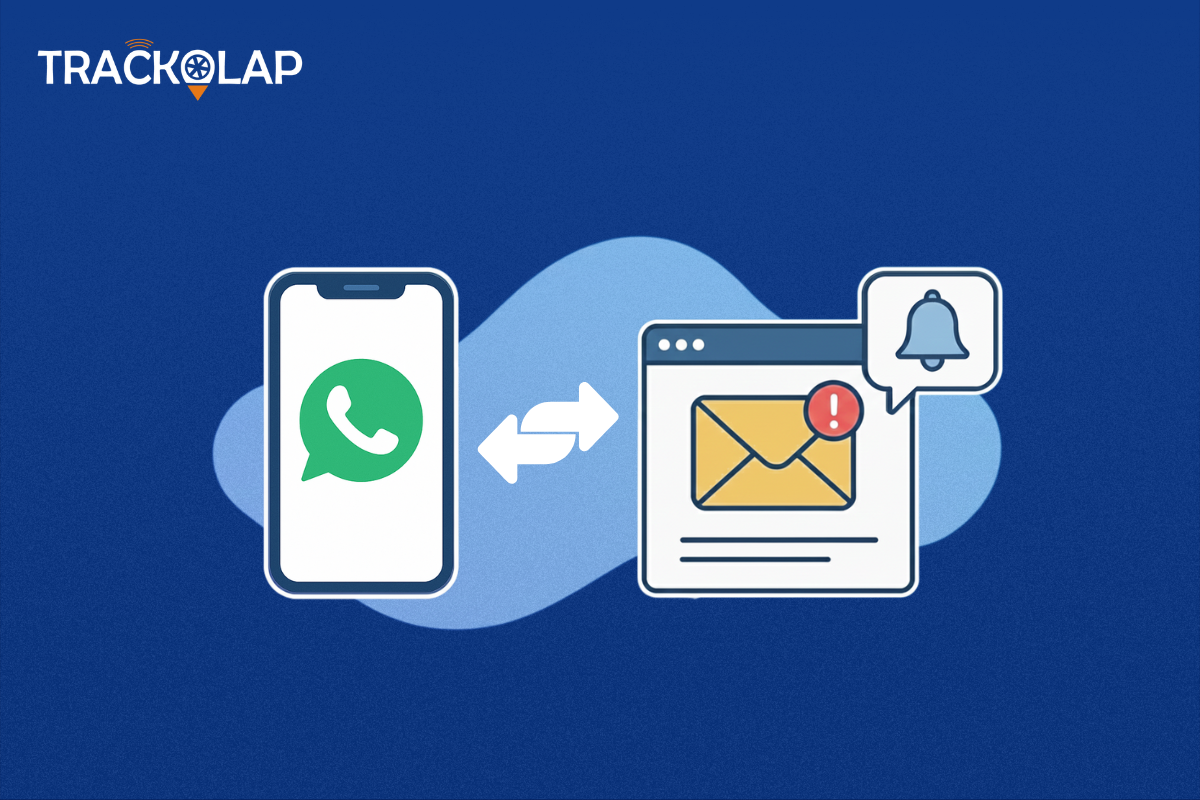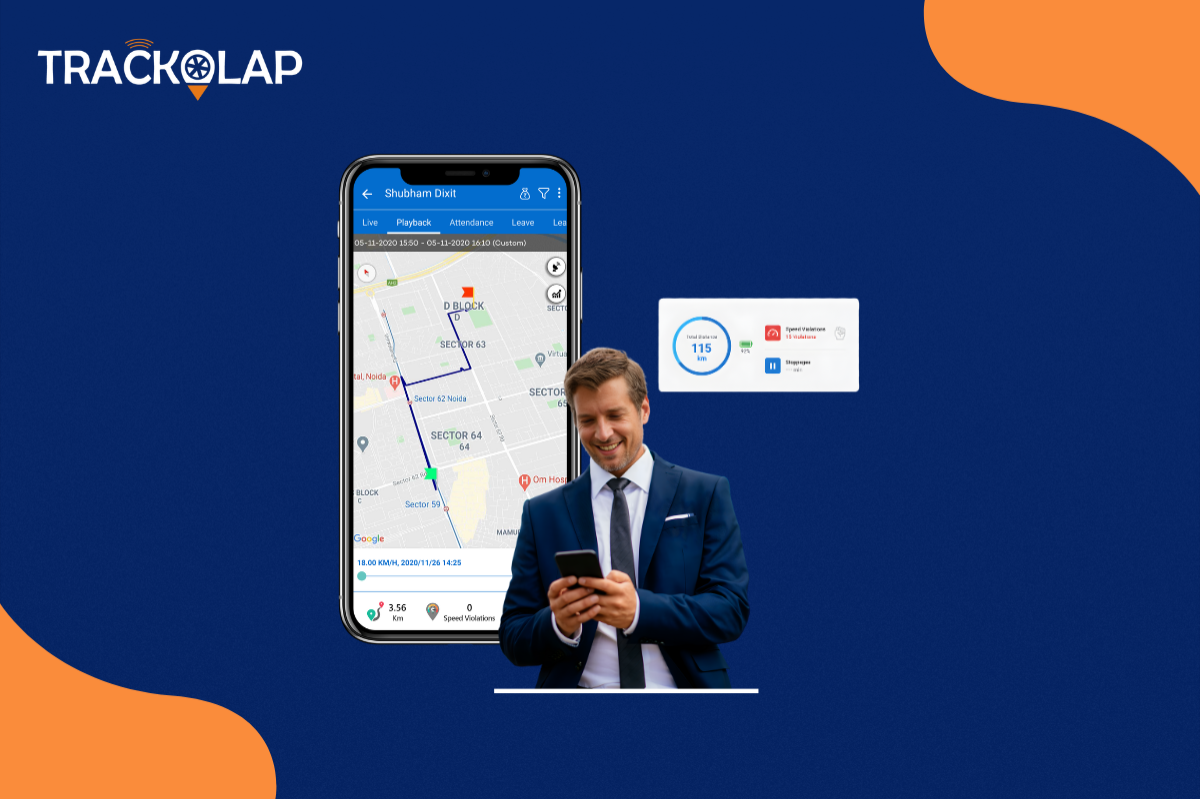
The Future of Workflow Automation: How TrackOlap is Helping Businesses in 2025
In the fast-paced business environment of 2025, companies are continuously seeking innovative ways to optimize operations, improve productivity, and reduce costs. Workflow automation has emerged as a key driver of these efficiencies, allowing businesses to streamline processes, eliminate human error, and ultimately achieve better results. At the forefront of this transformation is TrackOlap, a business automation platform that is reshaping how businesses handle workflow automation across various domains, from lead automation to employee location tracking. However, as companies embrace automation, they must also navigate the challenges that come with integrating these systems. In this blog, we will explore the future of workflow automation, focusing on how TrackOlap is addressing the challenges faced by companies in 2025, particularly in lead automation, expense management, target management, and employee location tracking.
1. The Rise of Workflow Automation in 2025
As technology continues to evolve, automation has moved beyond simple tasks and is now being applied to more complex workflows. From managing employee attendance to automate leads, tracking expenses , and managing targets, businesses are increasingly relying on automation to save time, reduce costs, and improve accuracy. By leveraging tools like TrackOlap, companies can integrate automation into their day-to-day operations to achieve greater efficiency and scalability.
For instance, TrackOlap’s cloud-based platform offers businesses the ability to automate multiple aspects of their workflow, all within a unified system. This enables seamless collaboration between teams, as well as better tracking and reporting of critical business activities. Automation is no longer a luxury for large enterprises, but a necessity for businesses of all sizes looking to stay competitive in the modern economy.
2. Challenges Facing Businesses in 2025
Despite the clear benefits, there are several challenges businesses face when implementing workflow automation. Some of the most common challenges include:
A. Managing Lead Automation
Generating quality leads is a cornerstone of any business, but manually handling lead data, nurturing relationships, and following up with prospects can be time-consuming and prone to errors. For many businesses, especially smaller companies, relying on traditional methods for lead automation software can hinder growth and lim it scalability.
However, lead automation tools like TrackOlap are designed to address these pain points by automating lead generation, qualification, and follow-up. TrackOlap’s advanced algorithms can analyze customer behavior, collect valuable data, and automatically push leads to the next stage in the sales funnel. This ensures that businesses can focus on converting prospects, rather than spending valuable time on repetitive tasks.
B. Handling Expense Management
Expense management is another area where automation is rapidly becoming a necessity. Businesses need to track a wide range of expenses, from employee reimbursements to operational costs, to ensure that budgets are adhered to and fraud is minimized. However, managing expenses manually can lead to errors, delays, and inefficiencies.
TrackOlap’s expense management features offer businesses a solution to this challenge. Through automated receipt capturing, approval workflows, and real-time tracking, companies can streamline the process and gain greater visibility into their spending. This helps business leaders make more informed decisions, identify cost-saving opportunities, and maintain control over their budgets.
C. Target Management and Performance Monitoring
Setting and tracking performance targets is crucial for aligning teams and ensuring that everyone is working toward the same goals. However, manually tracking progress against targets can be time-consuming, especially for large teams with diverse roles. Without automation, performance monitoring can become a complex and error-prone task.
TrackOlap’s target management system simplifies this process by automatically setting, tracking, and reporting on individual and team goals. Managers can track progress in real time, adjust targets as needed, and provide actionable insights to employees. This enhances transparency and accountability, ensuring that targets are met consistently and effectively.
D. Employee Location Tracking and Field Automation
As remote work continues to rise, businesses face the challenge of monitoring employee attendance, location, and productivity without the benefit of physical proximity. This is particularly difficult for businesses with mobile or field-based teams who need to track their employees’ whereabouts for safety, compliance, and operational efficiency.
TrackOlap’s employee location tracking feature solves this problem by providing real-time GPS tracking and geo-fencing capabilities. This allows companies to monitor where employees are working, ensure that they are meeting job requirements, and maintain compliance with labor regulations. By automating location tracking , businesses can also reduce the administrative burden of manually monitoring remote workers.
3. Solutions Provided by TrackOlap
TrackOlap’s suite of workflow automation tools is designed to address the challenges businesses face in 2025. Let’s dive deeper into the solutions TrackOlap offers in the areas of lead automation, expense management, target management, and employee location tracking.
A. Lead Automation: Smarter Sales
Lead generation and nurturing are critical components of any business strategy, yet many businesses struggle to convert leads into customers effectively. TrackOlap’s AI-driven lead automation tools use machine learning to analyze customer behavior and predict the best time to follow up with leads. By automating the lead qualification process, businesses can ensure that only the most promising prospects are passed along to the sales team.
TrackOlap’s system also integrates with CRM tools, allowing businesses to store and manage lead data in one place. With the ability to set up automated follow-up emails, schedule meetings, and provide personalized recommendations, businesses can drive higher conversion rates and build stronger customer relationships.
B. Expense Management: Streamlined and Transparent
Expense management is a critical part of maintaining financial health within a business. TrackOlap’s automated expense management features enable businesses to capture receipts digitally, track spending across multiple categories, and integrate with accounting software for streamlined reporting.
TrackOlap’s expense approval workflows ensure that every transaction goes through the appropriate channels, preventing unauthorized expenses and ensuring compliance. With real-time tracking and reporting, managers can keep a close eye on budget performance and make data-driven decisions to reduce costs.
C. Target Management: Aligning Teams with Automation
Effective target management requires constant monitoring and adjustments. TrackOlap’s target management system simplifies this by automatically setting targets based on historical data, performance metrics, and business objectives. With customizable dashboards, managers can track individual and team progress in real-time, allowing for quick course corrections when necessary.
Automated notifications ensure that employees are always aware of their progress toward their targets, which can help keep them motivated and focused. By removing the complexity of manual tracking, TrackOlap ensures that businesses can align their teams more effectively and achieve their objectives.
D. Employee Location Tracking: Keeping Teams Connected and Compliant
Employee location tracking is essential for businesses with remote or mobile teams. TrackOlap provides businesses with real-time GPS tracking to monitor employee locations, ensuring that workers are meeting their performance requirements. With geo-fencing, companies can set boundaries for specific job sites and receive alerts when employees enter or leave the designated areas.
TrackOlap also enables businesses to comply with labor laws by tracking hours worked, breaks taken, and ensuring that employees are adhering to safety regulations. This visibility not only helps improve accountability but also ensures that businesses stay compliant with local regulations.
4. The Future of Workflow Automation in Business
As we look ahead to 2025 and beyond, the role of workflow automation in business will continue to grow. Automation will become more sophisticated, machine learning, and data analytics, enabling businesses to make smarter decisions and achieve greater efficiencies. Companies that embrace automation tools like TrackOlap will have a competitive edge in navigating the complex landscape of modern business.
The future will also see greater integration between automation platforms, allowing businesses to seamlessly connect different systems and workflows. As more organizations adopt automation, the need for customizable and scalable solutions will become more important. TrackOlap is well-positioned to address these needs with its flexible, cloud-based platform that offers businesses the ability to adapt and grow in an ever-changing marketplace.
Conclusion
In 2025, businesses face numerous challenges in managing their workflows, from lead generation and expense tracking to employee performance and location management. TrackOlap is helping businesses overcome these challenges by offering intelligent, automated solutions that increase efficiency, reduce errors, and improve visibility. As the future of workflow automation unfolds, TrackOlap will continue to shape how companies operate, providing them with the tools they need to thrive in an increasingly automated world. With the right automation tools in place, businesses can focus on what truly matters—delivering value to customers and driving growth.






























 Back to Blogs
Back to Blogs










 D-5 Sector-59, Noida, Uttar Pradesh (India)
D-5 Sector-59, Noida, Uttar Pradesh (India) contactus@trackolap.com
contactus@trackolap.com 7011494501
7011494501










